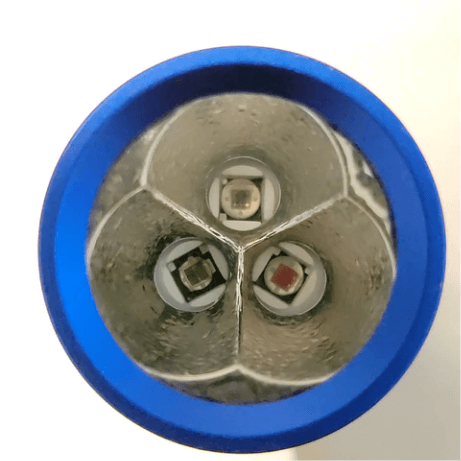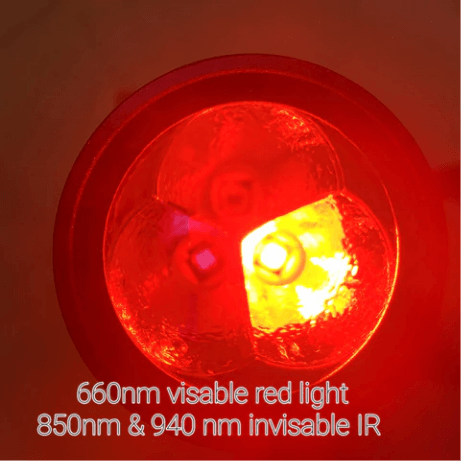Welcome to
Research Center
PBM Intro
FAQ
TROUBLE-
SHOOTING
PBM Intro
The following research articles and publications document the science behind PhotoBioModulation (PBM) and Low Level Laser Therapy (LLLT) red light therapy. Many of these sources outline studies into the specific wavelengths of PBM Light therapy.
- ❖Light Technology Successfully Reduces Cancer Patients’ Side Effects from Radiation & Chemotherapy
- National Aeronautics and Space Administration NASA
- ❖Low Level Laser Therapy in Dentistry
- Grace Sun, DDS & Jan Tunér
- ❖The Use of Nasa Light Emitting Diode Near-Infrared Technology for Biostimulation
- Medical College of Wisconsin
- ❖Photobiomodulation: Lasers vs Light Emitting Diodes
- University of Helsinki, Harvard University, Michael Hamblin
- ❖The Nuts and Bolts of Low Level Laser (Light) Therapy
- National Institutes of Health, Harvard MIT Division of Health Sciences and Technology, Massachusetts General Hospital
- ❖Phototherapy in peripheral nerve regeneration: From basic science to clinical study
- Neurosurgical Focus, Shimon Rochkind
- ❖NASA light-emitting diodes for the prevention of oral mucositis in pediatric bone marrow transplant patients. Whelan et al.
- ❖Effects of low-level laser therapy (LLLT) related to postexercise recovery. Leal et. al.
- ❖Shining light on the head: Photobiomodulation for brain disorders
- ❖A case control series for the effect of photobiomodulation in patients with low back pain and concurrent depression
- The preliminary investigation suggests that an antidepressant effect may result from PBM to the back and thighs in patients with LBP and concurrent depression.
- ❖Photobiomodulation in temporomandibular disorders
- Most articles showed that PBMT is effective in reducing pain and contributed to functional enhancement in TMD patients.
BLUE, RED & NIR (NEAR-INFRARED) LIGHT ARTICLES
- ❖Effect of 660/850nm LED on the Microcirculation of the Foot: Neurovascular Biphasic Reflex
- Phototherapy can be used to stimulate the healing of chronic ulcers of the lower limb, as it affects healing cells and neurons. In this way the study has sought to know if the heat stimulus of the 660/850nm contact LED is sufficient to trigger the response in the peripheral sympathetic nervous system of normal volunteers.
- ❖PhotoBioModulation (660nm) Therapy Reduces Oxidative Stress and Induces BDNF Expression in the Hippocampus
- PBMT inhibits hippocampal damage induced by oxidative stress and increases the expression of BDNF, which can be used as an alternative to treat a variety of related disorders that lead to nerve damage. Activation and redox homeostasis in neuronal cells may be a notable mechanism of the 660nm PBMT-mediated photobioreactivity.
- ❖Mechanisms and Applications of the Anti-Inflammatory Effects of PhotoBioModulation
- Wound healing, arthritis, muscle recovery, lung inflammation, traumatic brain injury, spinal cord injury, autoimmune diseases, abdominal fat and Achilles tendinopathy, thyroiditis, psoriasis have all been shown to accept PBM treatment well, particularly the 850nm wavelength with regards to muscle preconditioning and better athletic performance.
- ❖Effects of Light Emitting Diode (LED) Therapy at 940 nm on Inflammation Root Resorption in Rats
- The effects of LED therapy at 940nm on periodontal healing, inflammatory ell infiltration and root resorption were analyzed in an experimental model of orthodontic tooth movement in rats. The results suggest that LED therapy improved periodontal tissue repair and decreased inflammation and root resorption after the application of orthodontic force.
- ❖Low Level Laser Therapy Using 940nm LED in the Mandibular Impacted Third Molar Surgery: Double-Blind Randomized Clinical Trial
- In this clinical trial, the effect of intraoral low level laser with a wavelength of 940nm and an energy density of 10 J/cm2 was tested in one session after the surgical operation of the mandibular impacted third molar. The results reveal that LLLT has an alleviate effect on post-surgical pain. Further studies are needed to improve the understanding of the effectiveness of LLLT…
- ❖Intraoral Photobiomodulation-Induced Orthodontic Tooth Alignment: A Preliminary Study
- Under the limitations of this study, the findings suggest that intraoral PBM (850nm) could be used to decrease anterior alignment treatment time, which could consequently decrease full orthodontic treatment time. Further research in the form of a large, randomized trial is needed.
- ❖Different protocols of photobiomodulation therapy of hyposalivation
- The positive effect of the photobiomodulation therapy could be observed 10 days after the completion of the treatment, with better maintained effect of 830 nm wavelength. Thus, indicating a regenerative potential of this type of therapy which should be further investigated and compared with other therapeutic options for hyposalivation.
- ❖Effects of 940nm Light-Emitting Diode (LED) on Sciatic Nerve Regeneration in Rats
- The 940nm wavelength has been shown to improve nerve tissue regeneration as well as reducing edema and fibrodegeneration.
- ❖A double-masked, randomized, sham-controlled, single-center study with PBM for the treatment of dry age-related macular degeneration
- These pilot findings support previous reports and suggest the utility of PBM as a safe and effective therapy in subjects with dry age-related macular degeneration.
- ❖The Effect of Low-Level Laser Therapy on Salivary Glands in Patients with Xerostomia
- The results of our study indicate that the effects of low-level laser therapy on salivary glands are not only stimulating, but also regenerative to a degree since the glandular response to the same amount of applied laser energy increased linearly over time.
- ❖LLLT in the prevention and treatment of cancer therapy included mucositis: 2012 state of the art based on literature review and meta-analysis.
- There is moderate-to-strong evidence in favor of clinically relevant effects when LLLT is applied with optimal doses in cancer therapy-induced oral mucositis.
- ❖Low-Level Laser therapy in the management of mucositis and dermatitis induced by cancer therapy.
- Extraorally administered LLLT/PBM may be effective for the management of dermatitis induced by radiation therapy of various sites (breast, pelvis, head and neck).
- ❖Photobiomodulation Therapy in oral muositis and potentially malignant oral lesions: A therapy towards the future
- This review highlighted that there is growing evidence for the clinical benefits of PBMT in enhancing the quality of life of oncology patients.
- ❖Influence of the Light Source and Bleaching Gel on the Efficacy of the Tooth Whitening Process
- The source of irradiation is more relevant than the bleaching agent for efficient tooth whitening. In addition, photoactivation with LED was found to be the best choice: it yielded significant change in color with only a minor increase in pulpal temperature.
- ❖Antimicrobial blue light inactivation of pathogenic microbes: state of the art
- Antimicrobial blue light in the spectrum of 400-470 nm has demonstrated its intrinsic antimicrobial properties resulting from the presence of endogenous photosensitizing chromophores in pathogenic microbes and subsequently, its promise as a counter-actor of antibiotic resistance.
- ❖Effects of 405-, 532-, 650-, and 940-nm wavelengths of low-level laser therapies on orthodontic tooth movement in rats
- This study found the 650-nm wavelength to increase orthodontic tooth movement in rats.
- ❖Molecular impacts of photobiomodulation on bone regeneration: A systematic review
- PBM can significantly enhance expression of osteocalcin, collagen, RUNX-2, vascular endpthelial growth factor, bone morphogenic proteins and COX-2.
- ❖Bone substitutes and photobiomodulation in bone regeneration: A systematic review in animal experimental studies
- The 940nm wavelength has been shown to improve nerve tissue regeneration as well as reducing edema and fibrodegeneration.
- ❖Blue light: Friend or Foe?
- Blue lights can induce beneficial and adverse effects, depending on the dose and spectrum width of the exposure
- ❖Which wavelength is optimal for transcranial low-level laser stimulation?
- ❖A randomized clinical trial comparing the efficacy of low-level-laser therapy (LLLT) and laser acupuncture (LAT) in patients with temporomandibular disorders
- ❖Photobiomodulation using LLLT and LED of cells involved in osseointegration and peri-implant soft tissue healing
- ❖Management of dry socket with low level laser therapy
- ❖The effect of laser photobiomodulation on periodontal ligament stem cells
- ❖Assesment of the effectiveness of light-emitting diode and diode laser hybrid light sources to intensify dental bleaching treatment
LASER-ACUPUNCTURE ARTICLES
- ❖Characterizing acupuncture stimuli using brain imaging with FMRI—a systematic review and meta-analysis of the literature. Huang, Wenjing et al.
- ❖Relationship of acupuncture points and meridians to connective tissue planes. Langevin & Yandow.
- ❖Effectiveness of acupuncture for temporomandibular disorders and associated symptoms. Garbelotti et al.
- ❖Possible applications for fascial anatomy and fasciaology in traditional chinese medicine. Bai, Yu et al.
- ❖Acupoints initiate the healing process. Zhu, Heming.
- ❖Laser Acupuncture: A Concise Review.Chon et al.
- ❖A review of of the comparative susceptability of mircobial species to photoinactivation using 380-480 nm Violet blue light
- ❖Needleless acupuncture using low level laser therapy
- ❖A new definition of an acupuncture meridian
- ❖The efficacy of low-level diode laser versus laser acupuncture for the treatment of myofascial pain dysfunction syndrome (MPDS)
- ❖The history, mechanism and clinical application of auricular therapy in traditional chinese medicine
- ❖Auricular neuromodulation: The emerging concept beyond the stimulation of vagus and trigeminal nerves
- ❖Auricular acupressure therapy for patients with cancer with sleep disturbance: A systematic review and meta-analysis
- ❖Effect of laser acupuncture on salivary flow rate in patients with Sjogren’s syndrome

